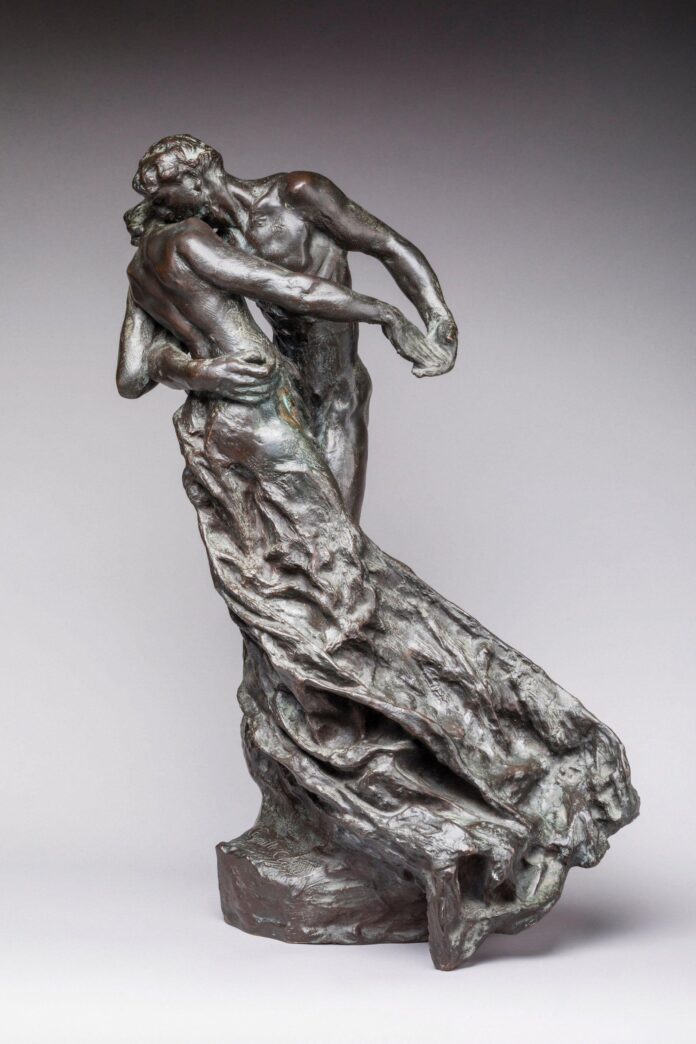The French sculptor Camille Claudel’s (1864-1943) masterpiece The Waltz, exhibited in different editions and mediums starting in 1893, shows two bodies so fluidly rendered that the artist Kiki Smith describes them in a forthcoming catalogue essay as moving to and from each other like “seaweed anchored underwater”.
The last time this work was shown by a US museum was in 2005 as part of the histrionically titled survey Camille Claudel and Rodin: Fateful Encounter at the Detroit Institute of Arts. Now it will be a highlight of Camille Claudel at the Art Institute of Chicago, which aims to see the artist on her own terms as a visionary and remarkably hands-on sculptor—and not through the lens of the powerful male sculptor.
This goal is admittedly challenging, as Auguste Rodin was Claudel’s teacher, collaborator and lover before her psychiatric institutionalisation, and he towers over all sculptors of the time. “Rodin is inescapable,” says the Art Institute’s Emerson Bowyer, who co-curated the show with Anne-Lise Desmas of the Getty Museum, Los Angeles, where the show will travel. “And perhaps we’ve been a little artificial in our approach, trying to exclude him as much as possible,” Bowyer says, explaining that it was “a very concerted decision” to compensate for the salacious biographical accounts (including a 1988 film starring Isabelle Adjani) that so often eclipse her work.

Claudel’s The Chatterboxes (1897) © Musée Rodin. Photo: Christian Baraja
The new exhibition features 55 works by Claudel, from large-scale examples like Age of Maturity (around 1902) on loan from the Musée d’Orsay and four versions of The Waltz (most notably the recently rediscovered Allioli bronze) to tiny figurines of women in everyday scenes such as gossiping or dreaming. “They can look like decorative art objects and are really small, but they are really compelling emotionally,” Desmas says. Some depict fireplace tableaux, complete with red lightbulbs to evoke flames, and one will be lit up for the Chicago show. (There will only be three works by Rodin, showing how the two artists’ influence went in both directions.)
The exhibition builds on recent Claudel scholarship out of France, including the publication of her catalogues raisonnés and letters. But the curators this time went beyond the usual suspects to invite “a younger generation of scholars to work with us on the catalogue,” Desmas says. “We were looking for fresh views and inputs,” she adds. The catalogue features an essay by Kiki Smith and a selection of letters, many published in English for the first time.

Claudel’s Young Girl with a Sheaf (1887) © Musée Rodin. Photo by Christian Baraja
The letters reveal an artist who, earning some critical support but nothing like the income of her male counterparts, made valiant—and sometimes desperate—attempts to secure the sales and commissions needed to finance large-scale sculptures. One exchange with a French official named Léon Bourgeois is particularly poignant, as Claudel sought to recoup 1,500 francs remaining for her Age of Maturity commission. Along with an imploring letter from her, the catalogue prints another, nominally from her father, a civil servant. Editors note that “the handwriting would indicate that Camille wrote the letter,” suggesting just how far she had to go to survive in a male-dominated business.
• Camille Claudel, Art Institute of Chicago, 7 October-19 February 2024; Getty Center, Los Angeles, 2 April-21 July 2024

























